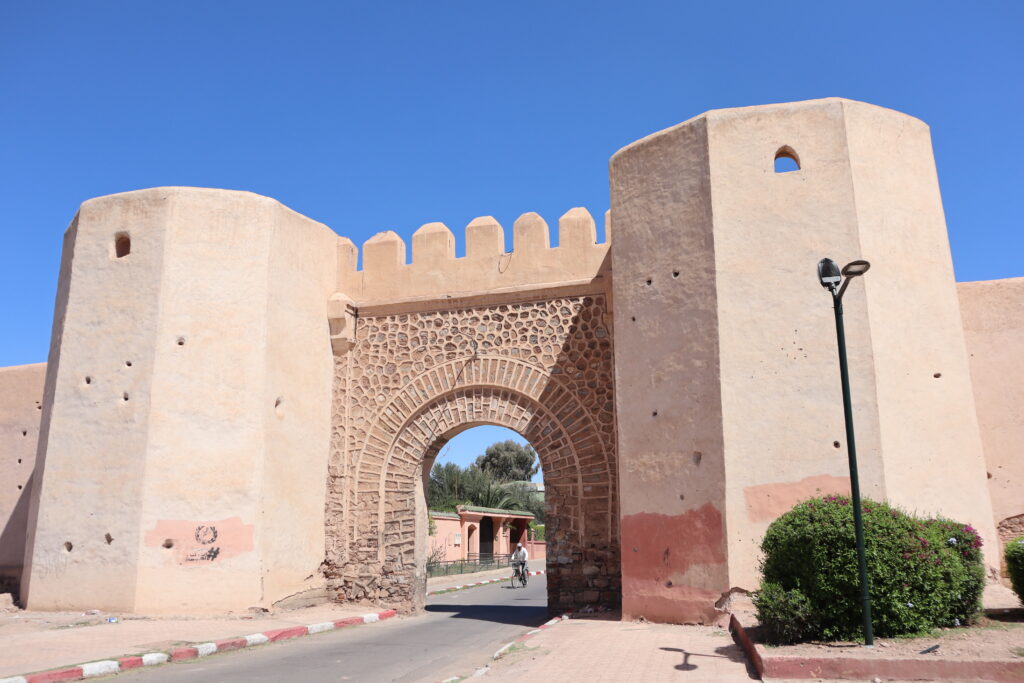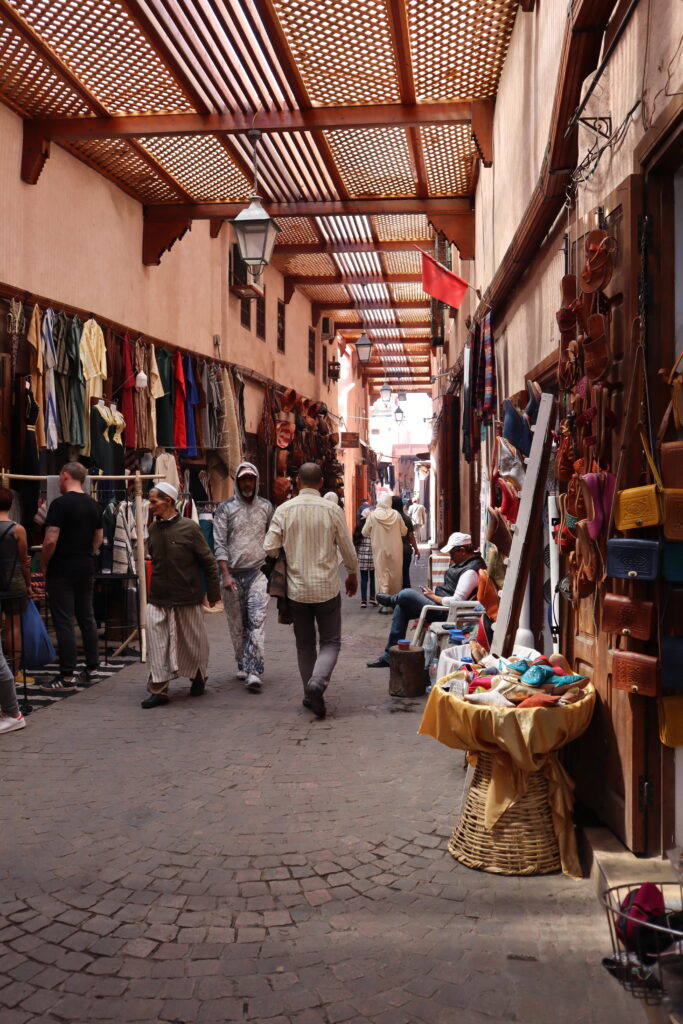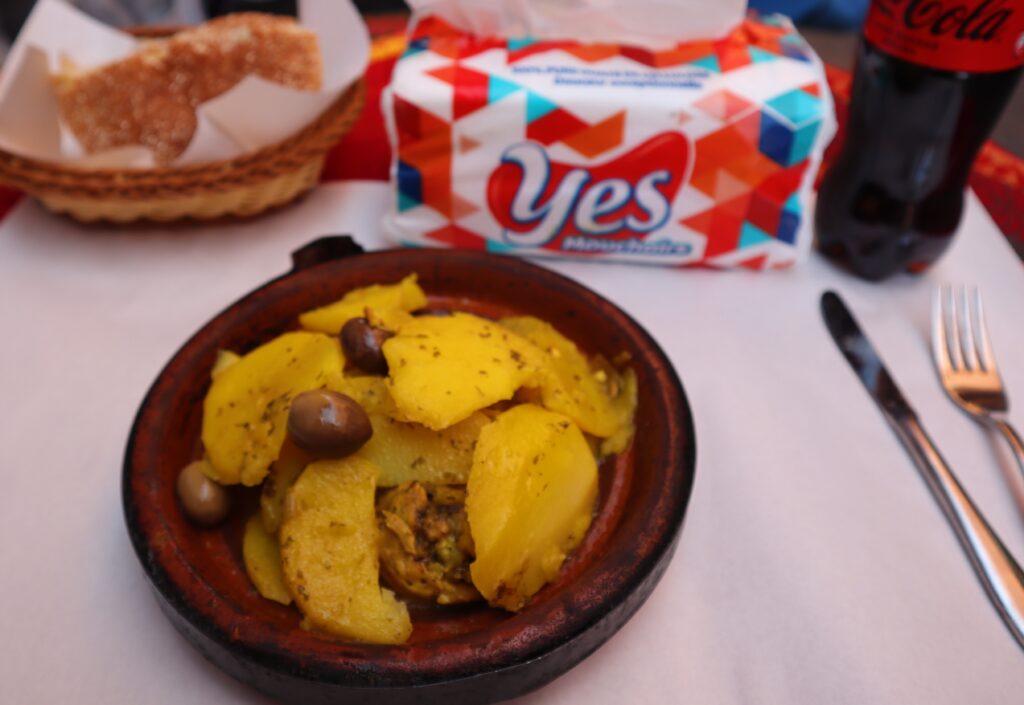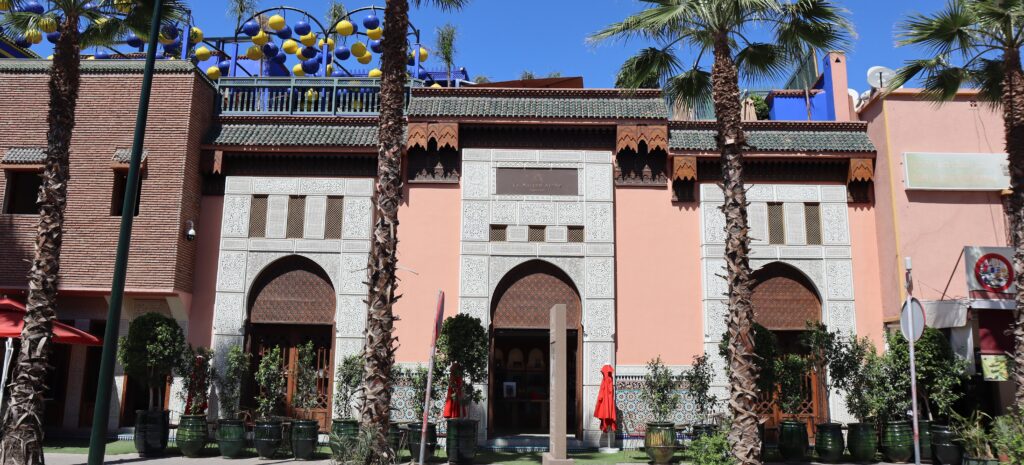
Morocco is a country that I have never before visited. I can now cross it off the list. The Red City of Marrakech (also, Marrakesh), which is neither the Moroccan capital nor its largest city (which are Rabat and Casablanca, respectively), was founded in the 11th century in the middle of the arable Haouz plain. So, it’s a farm town within sight of the snow-capped peaks of the Atlas Mountains. The Medina—an old city is called a ‘Medina’ in Morocco and much of North Africa—was constructed from clay which gave it a distinctive red hue. Hence, the “Red City.”
That “Red City” name was really taken to heart. Nearly everything, whether in the old city or the new, is red. The occasional splash of color (often a vivid blue) is striking, but very rare. As it turns out, monochromatic cities are difficult to navigate: everything looks the same.

The Medina is home to the markets, called Souks, where hundreds of merchants sell pretty much everything, much of it is handmade right in the shop. Souks, when set up in the square, are comprehensible; but if you visit the Souks within the city be ready to leave a trail Hansel and Gretel style. The city’s narrow streets make finding your way out nearly impossible without breadcrumbs… or just plain luck. I wandered about until I escaped, then figured out where I was and started home from where ever it was that happened to be.
In the Median, and elsewhere, you will find the famous ‘Riads.’ These are multi-story single-family homes built around a central courtyard. Riads usually look horrible from the outside, but are marvels on the inside. I imagine that the internal courtyards are never heated by direct sunlight, keeping the house nice and cool (the same can be said for the narrow streets of the Medina). The private courtyard usually has a small pool or fountain, which also helps to keep everything cool. You can rent one by the night (do you need 6 bedrooms?), or buy one starting at $200k for a small 3 or 4 bedrooms. Larger ones will cost a cool million or 4, but often have 12+ bedrooms and many have been converted into hotels.

The adjoining “modern” city, Gueliz (where I stayed), was built under French administration (first half of the 20th century) and is easier to walk around without getting too lost. But just barely. Demolition is the one constant in Gueliz. Older buildings are being pulled down, and new apartment buildings put up in their place. It is a shame to watch a beautiful old building torn down, but I don’t know whether the old building was unsafe or it just for profit.
The Moroccan people are friendly. Especially if they are selling something. You will hear “my friend” used as a common greeting. React and you will likely find yourself in the middle of business transaction of some sort. Possibly just a friendly chat about local history, followed by a request for money. Ah, capitalism.

Living here is cheap, and that includes restaurants. Dinner at small Moroccan restaurant might set you back $5 to $10. Dinner at a French restaurant could cost $40, including wine. Typical Moroccan foods are grilled meats (beef and chicken, mostly) and vegetables. Meats are sometimes served whole, as in a chicken quarter, but more likely as type of stew cooked in a tagine (also tajine, a clay pot with a tall, conical lid used for slow cooking over a charcoal grill). If you go native, you’ll skip the fork and eat everything using hunks of bread to pick it up. For a Tagine, you might find that a fork is just plain useless. I had a chicken tagine where the on-the-bone chicken leg was so tender and falling apart, that I couldn’t spear the meat with a fork. Best to grab some bread. Be sure to sop up the juices! Not the tidiest of ways to eat, but no one cares.
Don’t worry, those of us with a decidedly foreign look will be given a fork and knife. Also, when dinning at fancy foreign restaurants (French, Italian, Thai, KFC, etc.), you won’t be expected to eat using bits of bread.
And then there’s Ramadan. Ramadan, the ninth month in the Islamic calendar, is the holiest month in the Islamic calendar and a time of fasting, one of the five pillars of Islam. The pillars of Islam are Shahada (faith in the one god), Salah (prayer 5 times a day), Zakat (alms for the poor), Sawm (fasting during Ramadan) and Hajj (pilgrimage to Mecca). According to Al Jazeera, during Ramadan Muslims abstain from food, drink (including water), smoking, and sex from before sunrise prayers until after sunset prayers. Apparently, if no one eats, restaurants don’t open. Tourism is less than ideal during Ramadan, which is March-April time. I’ll have to keep that in mind for next time.


When is SOON? I want to hear about Marrakech….
Soon enough for ya?